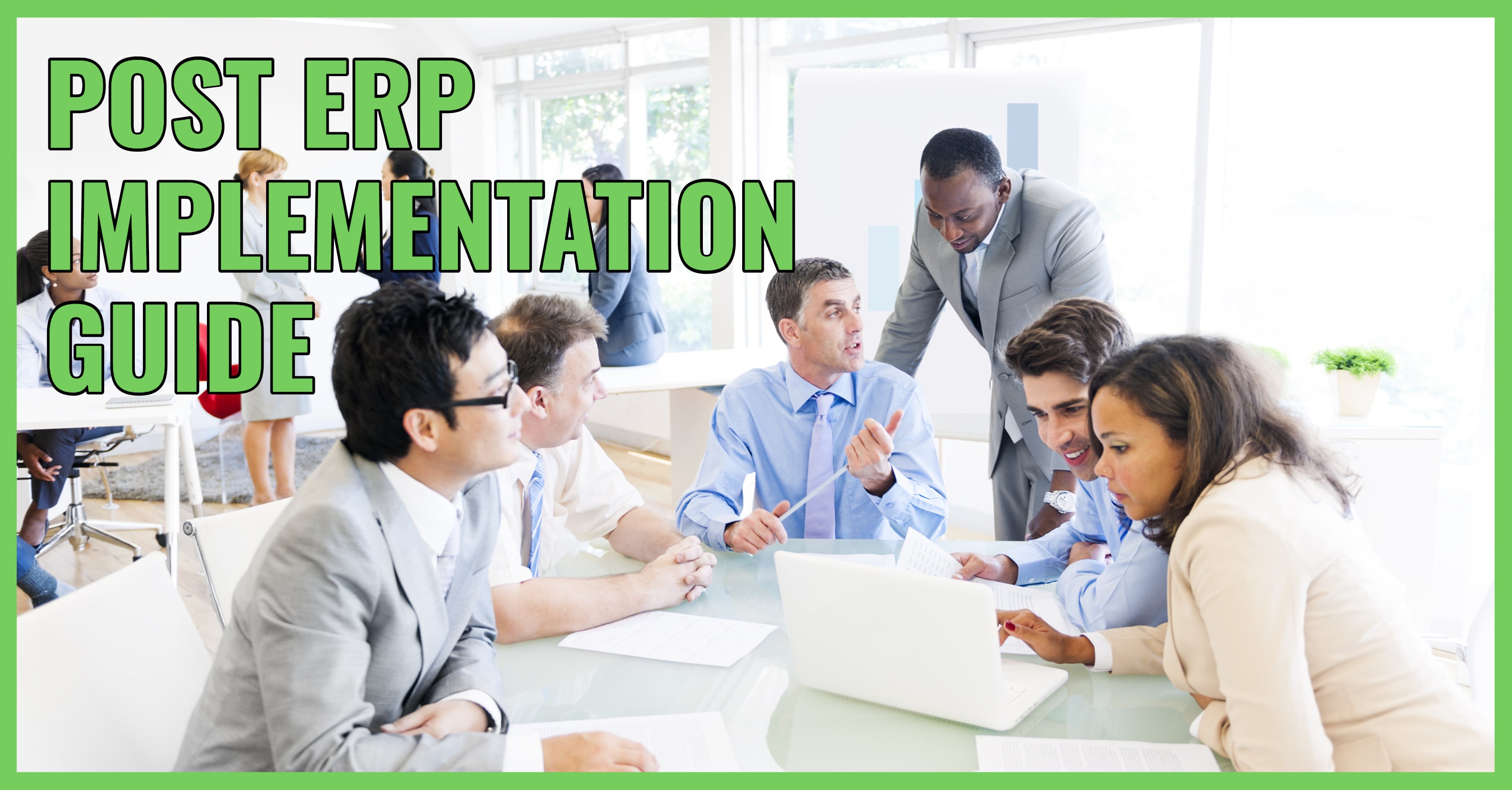
You Implemented ERP—Now What?
There’s no doubt that ERP post go-live euphoria is a real thing. After months of work and team meetings, you finally have an ERP system in place and ready to work. All you may want to do is sit back and celebrate.
Be careful, though. All that celebration can mean that no one is investing time into getting the ERP software off the ground and ensuring the system doesn’t stumble out of the gate. ERP can end up crashing when project teams don’t spend enough time thinking about what happens after go live. ERP is a substantial investment, after all, and you want it to be helpful for your company for years. Therefore, you need to consider the future, not just the go-live date.
Don’t let complacency undo everything you put into your ERP implementation. A smart project team will have a solid plan in place for the ERP post go-live period. When building your post ERP implementation plan, make sure to keep these key factors in mind.
Create a Roadmap
Any ERP implementation roadmap should continue well beyond your intended go-live date. It might seem like overkill at the beginning of your project timeline. Why not just schedule the kickoff day on the horizon and then figure it out from there? Well, there’s a well-known quote about “failing to plan” for a reason. The ERP post go-live phase must be taken very seriously—any small errors or mistakes will be magnified by unfamiliarity with the software.
No matter how small the risk, anything can happen to your ERP. From server space errors to faulty customizations that perpetuate bad data, you need to plan for any scenario. While it’s impossible to truly predict everything that could happen, casting your safety net wide will ensure you are more likely to bounce back from difficulties.
Train End Users
A good training strategy is the key to getting employees involved with the software, excited to use it and invested in its long-term success. Going through use cases with every end user and providing role-based training will ensure that everyone knows how to perform their day-to-day tasks in line with best practices. By repeating and enforcing those best practices, you’ll ensure the data is correct and workflows are running smoothly in that critical post go-live period.
You should have already identified and trained an ERP super user during the selection and implementation process. This post-implementation period is when they can really shine. The super user acts as the facilitator between the software and your users. They will be in the trenches to field common queries and diffuse frustration. That means you’ll need to ensure that your super user has the time they need to properly complete their tasks as the ERP expert during this critical period. Adjust their typical daily workload during this time accordingly—you don’t want to invest hundreds of training hours on a super user who has no time outside of their routine tasks to spread their software knowledge.
Manage Expectations
Too often executives and employees believe that a new ERP system will provide a magic Band-Aid for all their problems—usually because of flashy sales presentations or poor communication of project goals. These aspirations can lead to dangerous disenchantment with the system when it doesn’t fulfill all those expectations. Resentment for the software will only result in poor user adoption and company-wide negativity about the ERP. Both factors can derail the success of the project, so you need to nip these feelings in the bud.
If you have colleagues expressing disappointment or frustration in the post go-live period, don’t try and argue them down from their high expectations. Instead, redirect them to the original project goals and investigate whether a miscommunication might have happened. Point out that ERP software strengthens with longevity, more company data and solid user adoption—which can only happen if everyone works with the software from day one.
Review Goals
Finally, it’s important during the ERP post go-live phase for the project team to go back and review the goals that were set at the beginning. Audit the initial objectives against the actual outcomes, so you can measure your success. Was the go-live date the same that you projected? Were there budget problems or issues with third party consultants? ERP projects can be huge, incredibly complex and hard to predict, so some obstacles are to be expected. However, huge diversions from the original plans could spell trouble for the future of your software, as the system may not have been aligned properly to your business processes.
Mismatches between end users, workflows and your ERP will only create trouble for you down the road, so it is best to root them out as early as possible in the ERP post go-live phase. Creating a broad look at how your project has evolved over time will also help you set appropriate goals for the future. If there’s still work to be done in certain modules—or extra training is needed—you will know, and you can build the extra time into long-term deadlines and budgets.
Wrap Up
The post-implementation phase shouldn’t just be treated as an afterthought. It’s a critical transition period in your business and requires careful planning and involvement from the entire team. Without a solid, documented plan, you could risk the long-term success of your software investment.
If you’re looking for advice on how to plan for ERP usage post go live or are currently struggling through a tough implementation, contact Datix today! We’re an Epicor Gold Partner with over 20 years of ERP experience. From start to finish, our certified consultants are there to help you transform your business through software.
{{cta(‘770c1544-d87d-4acb-9fc4-7a25e1385094′,’justifycenter’)}}

